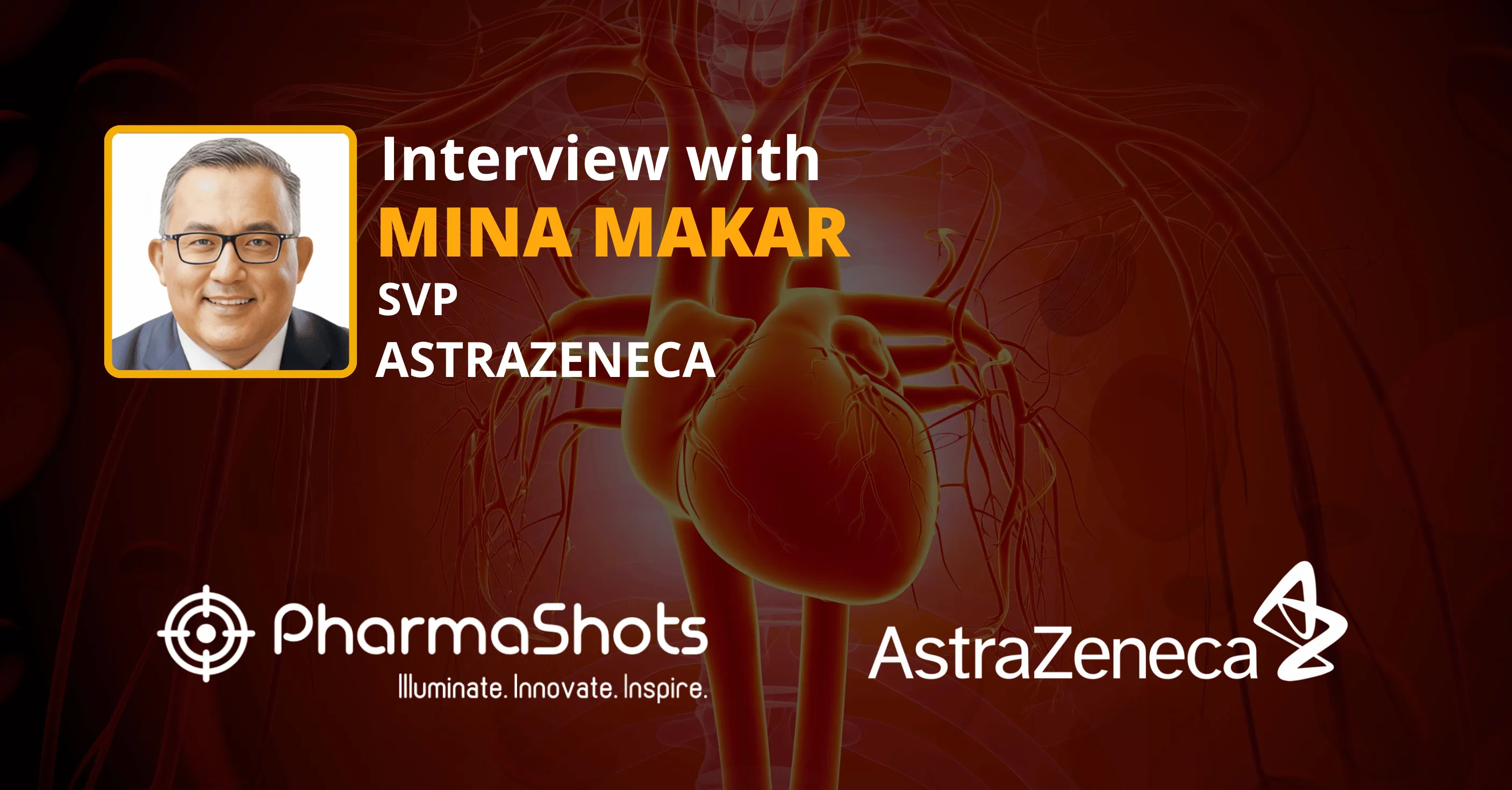
PharmaShots Interview: Saniona's Rami Levin Shares Insight on Tesomet for Hypothalamic Obesity
In an interview with PharmaShots, Rami Levin, Chief Executive Officer at Saniona shared his views on the US FDA's Orphan Drug Designation (ODD) to Tesomet for the treatment of hypothalamic obesity (HO) and discuss its role in the company's continued pipeline progress.
Shots:
- Saniona reported that the FDA has granted orphan drug designation to Tesomet for the treatment of hypothalamic obesity (HO)
- This milestone builds on the ODD granted by the FDA to Tesomet for the treatment of Prader-Willi Syndrome (PWS) in early 2021. Saniona is planning to initiate P-IIb studies of Tesomet in HO and PWS in H2'21
- Tesomet is an investigational fixed-dose combination therapy of tesofensine (a triple monoamine reuptake inhibitor) and metoprolol (a beta-1 selective blocker). It is the first and only investigational treatment for HO to receive ODD
Tuba: What is HO? How is it impacting the lives of patients?
Rami: Hypothalamic Obesity (HO) is a rare neuroendocrine disorder most caused by damage to the hypothalamus sustained during the removal of a craniopharyngioma, or CP, a rare, noncancerous central nervous system tumor. Currently, there are no FDA-approved treatments for HO and there is no cure for this disease. Damage to the hypothalamus can cause severe dysregulation of energy homeostasis and, as a result, patients with HO often suffer rapid, excessive, and intractable weight gain, uncontrollable hunger, memory impairment, attention deficits, excessive daytime sleepiness and lethargy, issues with impulse control and depression. Patients with HO are also at increased risk of developing obesity-related comorbid conditions such as Type 2 diabetes, hypertension, stroke, and congestive heart failure.
Tuba: What is Tesomet? How will it be helpful in hypothalamic obesity (HO)?
Rami: Tesomet is an investigational fixed-dose combination therapy of tesofensine (a triple monoamine reuptake inhibitor) and metoprolol (a beta-1 selective blocker). It is the first and only investigational treatment for HO to receive orphan drug designation.
Tesofensine is a novel, proprietary molecule developed in the labs of our founding scientists. It is designed to block the reabsorption of serotonin, noradrenaline and dopamine, which in turn reduces cravings for food, reduces appetite, and increases metabolic fat burn. We are currently preparing to initiate two Phase 2b studies of Tesomet in the second half of this year, one in HO and the other in Prader-Willi syndrome (PWS).
Tuba: Please discuss the clinical study and its results supporting the US FDA's ODD in HO for Tesomet.
Rami: Saniona evaluated Tesomet in a 24-week, double-blind, randomized, placebo-controlled initial Phase 2 trial in HO. Adults receiving Tesomet demonstrated statistically significant reductions in body weight and improvements in waist circumference and glycemic control. These improvements were maintained during an additional 24-week open-label extension. Tesomet was reported to be generally well-tolerated, and most adverse events were mild.
Tuba: What does this designation mean to the company? What role does it play in the company's continued pipeline progress?
Rami: Saniona is proud to be pioneering a regulatory path forward for people living with HO, and we are thrilled to have received the first-ever FDA orphan drug designation in this indication.
Orphan drug designation is a special status granted by the FDA to medicines and biologics that are intended for the treatment of rare diseases that affect fewer than 200,000 people in the U.S. The number of people living with HO is estimated to be between 10,000 and 25,000 in the U.S. and between 16,000 and 40,000 in Europe. Having this designation qualifies Saniona for certain development benefits, including tax credits, elimination of certain FDA license application fees, and seven years of market exclusivity in the U.S. following approval.
Tuba: Are you planning for any caregiver and patient feedback programs for Tesomet?
Rami: One of the key pillars of Saniona is our Patient Advocacy team, whose goal is to ensure patient and family voices help shape us from the start. We have already initiated multiple partnerships with the HO advocacy community to incorporate caregiver and patient feedback into the clinical trial process and to provide the community with education on clinical trials. For example, the HO community has been incredibly helpful in educating us on ways to ensure site visits during the clinical trial to provide an optimal patient experience.
Tuba: If approved, do you think it will be a boom for the patients suffering from this rare disease?
Rami: HO places a tremendous burden on patients, caregivers and families. Not only does HO cause severe rapid, excessive, and intractable weight gain, uncontrollable hunger, memory impairment, attention deficits, excessive daytime sleepiness and lethargy, issues with impulse control and depression. Patients with HO are also at increased risk of developing obesity-related comorbid conditions such as Type 2 diabetes, hypertension, stroke and congestive heart failure. Orphan drug designation for Tesomet in HO is a critical step forward for Saniona and for this community, and we certainly hope a future approval would significantly improve the lives of patients and their families struggling with this disease.
Tuba: What motivates you to work on rare diseases?
Rami: Personally, I have worked in rare diseases for many years, even before I became the CEO of Saniona. I have been struck by the tremendous unmet need in this area: there are an estimated 7,000 rare diseases, and less than 10% have FDA-approved treatments. Working to develop medicines for these communities provides you the opportunity to work closely with many families, to hear their stories and understand their experiences. It is incredibly motivating to be able to show them that someone cares about their journey and to provide them with hope.
Tuba: Discuss your pipeline targeting multiple rare diseases.
Rami: In addition to Tesomet, which as I mentioned is advancing into Phase 2b clinical trials for HO and PWS, Saniona is a leader in the discovery of highly specific ion channel modulators. We have developed SAN711, which is in Phase 1 and may have applicability in treating neuropathic disorders, and SAN903, which is in preclinical development and may be applicable in treating rare inflammatory, fibrotic and hematological disorders. We are also advancing many earlier-stage discovery programs based on our ion channel expertise.
Tuba: Are you planning to expand your rare disease portfolio? If yes, what would other targeted indications be?
Rami: Our ion channel library consists of more than 20,000 proprietary ion channel modulators. We are confident that some of them will become new medicines, but it is premature to speculate about indications at this stage.
Tuba: Discuss your upcoming plans with our readers in terms of any regulatory submission, collaborations, and other details.
Rami: We are currently focused on advancing Tesomet, SAN711 and SAN903. As I mentioned, Tesomet is entering Phase 2b trials this year for HO and PWS, SAN711 is in Phase 1, and SAN903 is in preclinical. We look forward to advancing these key programs while evaluating and selecting new programs emerging from our ion channel discovery engine.
Source: Hotze Health and Wellness Center
About Rami Levin:

Rami Levin is the Chief Executive Officer of Saniona. Levin serves as a member of the Board of Advisors for Life Science Cares.

This content piece was prepared by our former Senior Editor. She had expertise in life science research and was an avid reader. For any query reach out to us at connect@pharmashots.com














